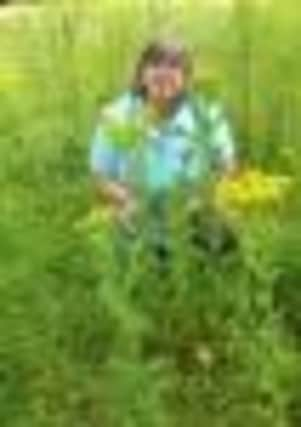Beware wrong sort of flower power


Ninfield, Hooe and Wartling councillor Pam Doodes is well aware of its harmful properties and is fighting to restrict its spread in the area and to alert people to the risks it poses.
Pam said: “At this time of year people are attracted by its pretty bright yellow flowers, not realising just how dangerous this poisonous notifiable weed is to both humans and animals.
Advertisement
Hide AdAdvertisement
Hide Ad“It contains alkaloids poisonous to horses and other farm animals such as sheep and cattle, and also to wild animals such as hare and deer. It can also harm humans. Its toxins can enter the bloodstream through the skin, so protective clothing must be worn when handling the plant.
“In the past, I have had to step in when I’ve seen families picking the flowers because they look pretty, not realising that they could end up getting poisoned.”
Pam, who sits on Wealden District Council, has witnessed a steady and alarming increase in the spread of ragwort and first brought this to the attention of the authorities in March 2002.
But since then, the problem has escalated and ragwort is now a common sight on verges, in some gardens and in the countryside.
Advertisement
Hide AdAdvertisement
Hide AdNinfield Hooe and Wartling parish councils all support Pam in her campaign and have joined her in the task of telling people about its dangers. Pam said: “I would be pleased if other councils could follow their example.” The Weeds Act 1959 allows the Secretary of State for the Environment to take statutory action to control the spread of ragwort.
But the responsibility for weed control rests primarily with the occupier of land on which the weeds grow. Under the Act they can be served with a notice requiring them to take action to prevent their spread. These powers have been devolved to Natural England.
Pam will again be contacting East Sussex County Council, The Highways Agency, Natural England, Defra and the National Farmers’ Union urging them to put this matter high on their agenda.
She has also had talks with Bexhill and Battle MP Greg Barker, who was instrumental in arranging a Ragwort Taskforce nine years ago.
SOME FACTS
Advertisement
Hide AdAdvertisement
Hide Ad*Ragwort is one of the most frequent causes of plant poisoning of livestock in Britain.
*Equines and bovines are more susceptible to ragwort poisoning than other livestock.
* Young animals are more at risk than mature animals.
* Ragwort is normally a biennial plant, presents as a rosette close to the ground in spring of its first year then grows upwards and flowers during the summer of its second year. However, cutting or topping ragwort may alter the plant’s lifecycle and result in it being present as a perennial.
* Each plant can produce up to 150,000 seeds with a 70 per cent germination rate.
Advertisement
Hide AdAdvertisement
Hide Ad* Ragwort seeds can be dormant in the soil for up to 20 years. This explains why the odd plant may appear - despite good pasture management - where weeds are otherwise under control.
* Fragments of root left behind in the soil when the plant is removed can regrow.
* Ragwort poisoning can occur at any time of year, so constant vigilance is vital
* Ragwort acts as a cumulative poison, eventually destroying the liver. A small intake of ragwort over a long period can be just as damaging as a larger intake on a single occasion.
Advertisement
Hide AdAdvertisement
Hide Ad* Little can be done for an animal once the clinical symptoms appear.
* The toxins in ragwort are not destroyed by cutting, pulling, digging up, spraying or drying.
* Ragwort becomes much more palatable following cutting or treatment. As the plants wilt and dry, the bitter taste is lost. Horses lose the ability to detect it and may therefore eat it more readily.
Further information is available by contacting the Weeds Helpline on 0300 060 1112 or logging on to: www.defra.gov.uk